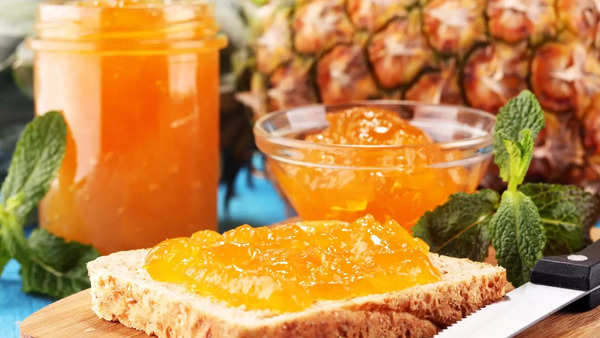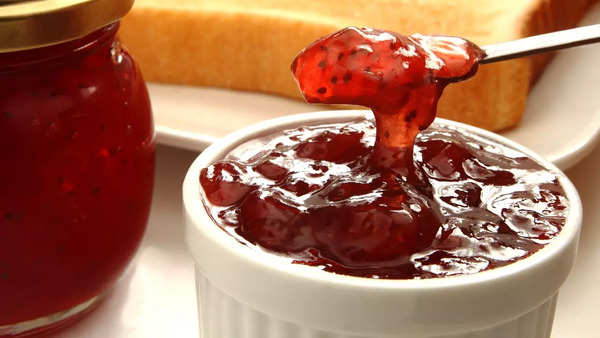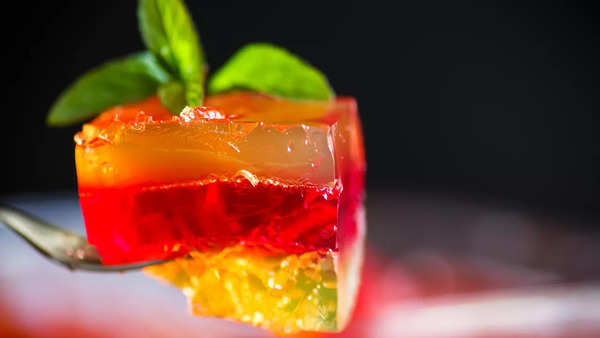What is Marmalade?
Marmalade stands out as the boldest of the trio, primarily due to its zesty kick. This spread originates from the peel of citrus fruits like oranges, lemons, or grapefruits. The process involves slicing the fruit peel finely, simmering it with sugar, and adding the fruit’s juice. The result? A bittersweet, chunky concoction that bursts with citrusy flavour and is famous for its vibrant orange hue.

Jam, a fruity delight
Jam is a versatile favourite that boasts a smoother, thicker texture compared to marmalade. The key difference lies in the preparation process. To create jam, ripe fruits are crushed, pulped, or mashed before being combined with sugar and pectin, a natural thickening agent. The mixture is then heated to achieve the desired consistency. The result is a luscious, fruit-forward spread that preserves the essence of the fruit.

All you need to know about Jelly
Jelly, on the other hand, represents a refined simplicity. Unlike marmalade and jam, jelly is characterized by its crystal-clear appearance and smooth texture. This clarity is achieved by straining the fruit juice through a cloth or mesh, separating it from solids like pulp and seeds. The juice is then combined with sugar and pectin, resulting in a gel-like substance that’s the epitome of fruit purity.

Difference between flavour, texture, and pairings
These distinctions in preparation give rise to varying flavours and textures. While marmalade is known for its tangy and slightly bitter taste, making it a perfect companion for hearty breakfast options or glazing meats. Jams, on the other hand with their chunkier consistency and sweeter flavour, complement everything from scones to sandwiches. And Jelly, with its pristine clarity, serves as an excellent topping for desserts and pairs exceptionally well with peanut butter.
How do they differ in nutrition and their uses
From a nutritional perspective, marmalade contains the added health benefit of citrus peel, packed with antioxidants and dietary fibre. Jams offer a balanced sweetness, and jellies are prized for their fruit purity. All three can be part of a well-balanced diet when consumed in moderation.
In the culinary world, these fruit spreads serve not just as condiments but also as essential ingredients in sauces, marinades, and desserts, allowing chefs to unleash their creativity.
The bottom line
As we delve deeper into the realm of culinary delights, it becomes evident that marmalade, jam, and jelly are not merely spread but distinct treasures, each with its own unique qualities and contribution to the world of flavour. The next time you spread a spoonful of your favourite fruit concoction, take a moment to savour the nuances that differentiate marmalade, jam, and jelly—three sweet wonders that have graced breakfast tables and kitchens for generations.
ALSO READ: These 3 egg dishes have similar names, but are so different!
